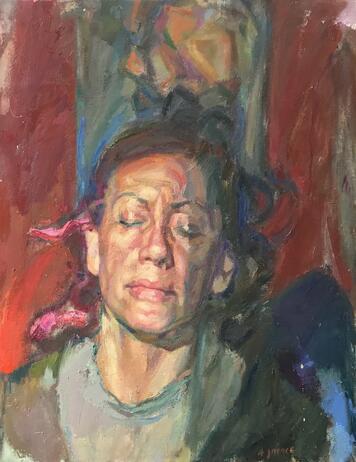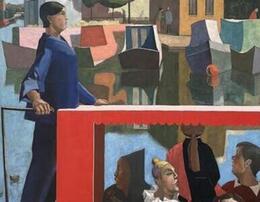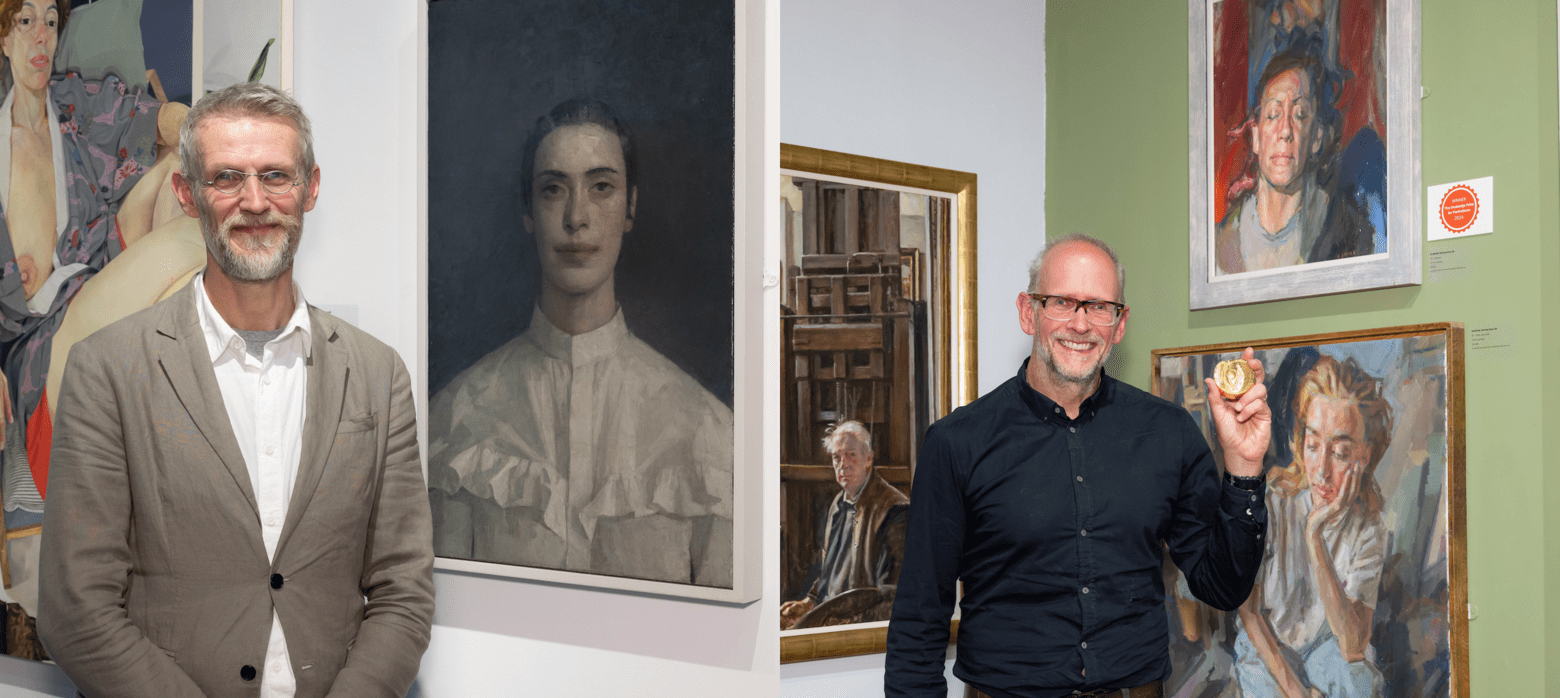Behind the Awards: Insights from Royal Society of Portrait Painters Annual Exhibition
/ Royal Society of Portrait Painters
Congratulations to artist member Andrew James NEAC RP, who won The Ondaatje Prize for Portraiture for his work Reverie, recognised as the most distinguished portrait in the RP Annual Exhibition 2024.
Additionally, massive congratulations to artist Mark Shields for winning The William Lock Portrait Prize for his piece Companion, celebrated as the most timeless portrait, showcasing a true mastery of paint and its aesthetic potential.
We had the pleasure of speaking with both award winners at the Royal Society of Portrait Painters, special Panel Talk and Prize-Giving Ceremony.
Q&A with Andrew James NEAC RP
How do you feel about receiving this prestigious award and what does it mean to you?
I am superficially, momentarily rather overwhelmed. I’ve always seen it as sort of ‘gold standard of excellence in portraiture’. I think for the British tradition The Ondaatje Prize has been the one that I’ve really dearly wanted. I feel some sort of completion which I never ever thought I would.
Could you share some background on your work 'Reverie', what inspired this piece?
It's my wife, in a sense I’ve painted her for over 25 years maybe a few times each year. I’ve painted modest works, grand works, this was just another picture, it was born from photographic reference and started well over a year ago and picked up earlier this year. I started by sculpting the face, generating the underlying feel and created a whole subtext above, so in a sense generated what the Reverie might be. It wasn’t Reverie to start with, it was more like a sense of trying to pick the internal node as visibly as possible, because obviously there is no eye contact, so I wanted to evoke a complete sense of whole inner communication externally.

In ‘Reverie’ your portraits are infused with life and energy through unique colour relationships and techniques. Can you describe your process for developing these colour relationships and their impact on the vitality of your work?
I suppose the underlying thing is that I’ve always wanted to engender is a sense of vitality and amplification in my work, it has a slightly sort of agitated, energised quality, I am completely self-taught, very instinctual and intuitive.
This portrait, ‘Reverie’ is raw, it was created in a more considered cerebral approach. I wanted It to be as direct as possible, but also by refinement, a sort of overwhelming energy and control through refinement as well, and those two elements playing against each other.
Q&A with Mark Shields
How do you feel about receiving this prestigious award, and what does it mean for your career?
Firstly, it is a tremendous honour and I great shock and a surprise. There is a part of me that feels almost apologetic because the other shortlisted artists have skills and abilities that I don’t have and many others in the current exhibition. I have been self-employed for 33 years and there is no guarantee of when your next work is going to come in, so to be awarded with something like this, is so amazing.
As an artist, I spend a lot of time just eliminating. I feel that artists today and including myself are very self-critical, so getting prizes is hard, as you see flaws in your work and you question what I should have done or shouldn't have done in my work.

The prize talks about being for the most timeless work and that is something that all artists long to be able to produce whatever it means, there is no formula for timelessness in a work.
Your portrait ‘Companion’ showcases a distinctive blend of realism and a muted, darker colour palette. Could you discuss your artistic influences and what drives your choice of colour and tone?
The source of my portrait is from my wife, Helen. We have been married for 36 years now, she probably turns up in most of the faces of my artworks somewhere - a bit of her.
My paintings often look slightly detached and remote in a way, people are almost visionary people and hybrid a truth, that we are sometimes afraid of, that there is a secret knowledge there, that say something that we don’t want to hear that is deeply true. That ‘strangeness’ in my work, is very important to me, to be able to keep undoing and re-doing.
Moving away from the literal, the lightness starts to vanish a bit, it takes on another presence in an away. But actually, when I was doing it, I was very conscious of using my Egyptian mummy paintings from the 2nd century, they painted likenesses of that person, which were attached to the front of a mummy.
They are astonishing living presences, almost disturbing, and you are convinced that they are real people but it also feels like an architype, that we can identify with them at any time and that’s why the timeless idea with this prize I thought is a really lovely thing. As that is something you want somehow, an image to have that, that it speaks now, its relevant now.
It’s not a portrait that appears to have been completed from a certain time in the past, I am not interested in doing things like that.

